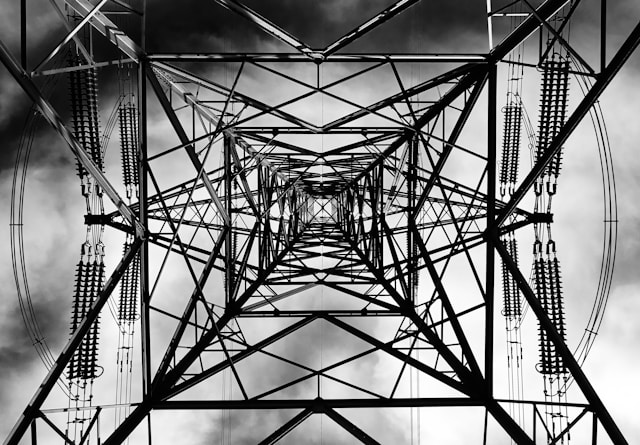What’s the Best Way to Install Eco-Friendly Insulation in a Period Attic?

As we all strive to reduce our carbon footprint and make our homes more energy efficient, one area that often gets overlooked is the attic. Period homes, with their timeless elegance and charm, can be particularly problematic in terms of energy efficiency. The solution? Insulation. Not just any insulation, but eco-friendly insulation that not only keeps your house warm but is kind to the planet too. This article will explore the benefits of eco-friendly insulation, compare the best materials to use, and guide you through the installation process.
The Importance of Attic Insulation for Energy Efficiency
You may wonder why the attic is such a crucial area for insulation. Well, the answer lies in basic physics: heat rises. Without proper attic insulation, your house will lose a significant portion of its heat through the roof. This not only makes your home less comfortable in the cooler months, but it also means that your heating system has to work harder, consuming more energy and escalating your bills.
A voir aussi : How to Design an Energy-Efficient Roof Garden with a Cooling Effect for Your Home?
Embracing insulation in your attic can drastically improve the energy efficiency of your home. It creates a barrier that slows the escape of heat, keeping it within your living spaces. This drastically reduces the amount of energy needed to heat your home, thereby reducing your energy bills. Furthermore, good insulation can also keep your home cooler in the summer months by preventing hot air from the outside from penetrating your house.
Comparing Eco-Friendly Insulation Materials
When it comes to choosing an eco-friendly insulation material, there are several options available, including cellulose, fiberglass, and spray foam insulation.
En parallèle : What Are the Most Resilient Groundcover Plants for a Shady Courtyard?
Cellulose insulation, often made from recycled newsprint or cardboard, is a popular choice for eco-conscious homeowners. It is non-toxic, requires minimal energy to manufacture compared to other insulation materials, and can be blown into the attic space, filling gaps and providing an effective heat barrier.
Fiberglass insulation, on the other hand, is made from fine strands of glass woven into a mat. While not as eco-friendly as cellulose, it is still a viable option as it’s made from a plentiful resource and is highly efficient at trapping air and restricting heat flow.
Spray foam insulation is a third option. This type of insulation expands to fill spaces, providing an excellent barrier against both heat and air movement. However, it is more expensive and has a higher environmental impact than cellulose or fiberglass.
Installing Blown Cellulose Insulation in Attics
Blown cellulose insulation is an excellent choice for period attics where it might not be practical or desirable to remove existing structures or finishes to install insulation. This method involves blowing the cellulose material into the attic space, filling all gaps and crevices.
Before the cellulose is blown in, make sure to seal all air leaks in the roof and around windows, doors, and electrical fixtures. This will prevent moisture from entering the attic, which could lead to mold and rot.
Once the attic is prepared, the insulation process can begin. The cellulose is blown in using specialized equipment, covering the attic floor and filling the space between the roof rafters. The material settles into a thick layer that effectively blocks heat transfer, making your home more energy-efficient.
Maintaining the Efficiency of Your Insulation
Once your eco-friendly insulation is installed, it’s essential to maintain its efficiency. This will involve regular checks for moisture, which can degrade the insulation’s effectiveness. Look out for any signs of roof leaks or condensation in the attic.
Additionally, be aware that over time, some insulation materials can settle and compact, reducing their thickness and thus their efficiency. This is particularly true for blown cellulose insulation. Regular checks will help ensure your insulation remains at its optimum level, keeping your home energy-efficient and your bills low.
Remember, installing and maintaining attic insulation in your period home is not just about saving on energy bills. It’s also about preserving the integrity of your home and doing your part for the environment. Choose the right eco-friendly insulation, install it correctly, and enjoy a warmer, more comfortable, and more sustainable home.
Evaluating the Cost and Energy Savings
The cost and energy savings associated with installing eco-friendly insulation in your attic can be considerable. It’s vital to weigh the initial cost of materials and installation against the long-term savings on your utility bills.
Generally, installing blown insulation in your attic can be a relatively cost-effective home improvement project, particularly when compared to other energy-saving measures. Cellulose insulation, although slightly more expensive than fiberglass, offers excellent value for money due to its superior insulating properties and eco-friendly credentials.
Energy savings can be substantial. The U.S. Department of Energy estimates that proper insulation can reduce heating and cooling costs by up to 20%. This is a significant saving, especially when you consider the lifetime of the insulation, which can be up to a century for cellulose.
While the cost of spray foam insulation is typically higher, it provides a more thorough seal against air leaks, which is beneficial in terms of energy efficiency. However, its environmental impact should be considered, as it has a higher carbon footprint due to the chemicals used in its production.
Remember, the energy savings you make will not only reduce your utility bills but also your carbon footprint, contributing to a healthier planet.
Conclusion: Combining Period Charm with Modern Sustainability
Installing eco-friendly insulation in your period attic is a practical and environmentally responsible way to improve the energy efficiency of your home. The right choice of insulation materials, such as cellulose or fiberglass, can help reduce heat loss, minimize heating cooling costs, and contribute to a more sustainable lifestyle.
While it’s essential to maintain the charm and character of your period home, it’s equally important to ensure it’s efficient and sustainable. With careful selection and professional installation of attic insulation, you can create a cosy, efficient home that respects both its historical integrity and the environment.
Remember, the journey to a more energy-efficient home doesn’t stop at insulation. Combine this with other eco-friendly measures, such as energy-efficient appliances, LED lighting, and water conservation methods, for a comprehensive approach to reducing your carbon footprint.
In conclusion, investing in eco-friendly insulation for your period attic is not just a wise financial decision; it’s a commitment to sustainability, energy savings, and the preservation of your home’s unique charm. Your choice will have a lasting impact, reducing both your energy bills and your carbon footprint, for a greener, more comfortable, and cost-effective living space.
